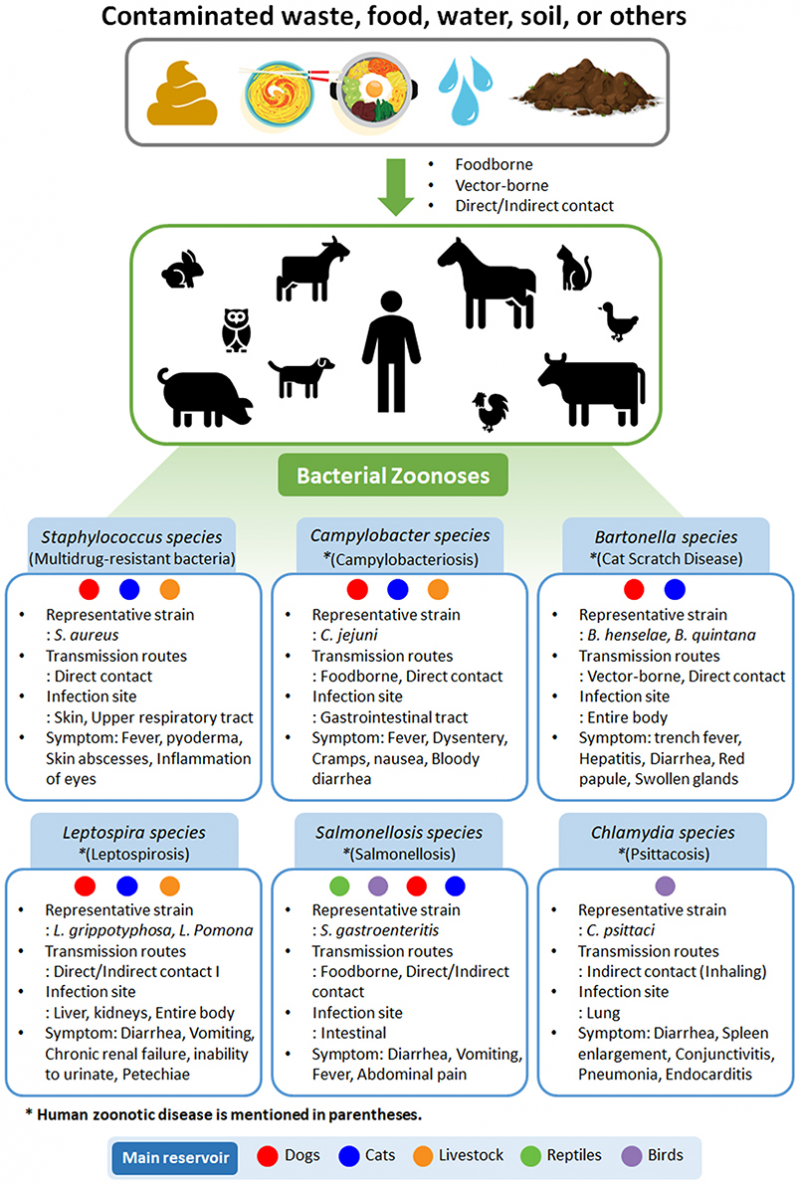Zoonotic disease classification
Bacteria, viruses, parasites, and fungus are all types of disease agents that cause zoonotic illness. Although zoonotic illnesses are classified according to their infectious agents, they may also be split into those that are transferred from nonhuman animals to people and those that are transmitted from humans to nonhuman animals. Examples of complicated zoonotic disease transmission pathways include the spread of Mycobacterium tuberculosis from people to cattle and elephants, as well as the spread of methacillin-resistant Staphylococcus aureus (MRSA) from humans to horses and back to humans. Foot-and-mouth disease in cattle is an example of a zoonotic illness since it is seldom transferred between nonhuman animals and humans.
Zoonotic illnesses can also be classed based on their life cycle. Orthozoonoses are diseases that are transmitted directly (e.g., by direct touch or a mechanical vector) and are maintained in nature in a single vertebrate host species; an example is rabies, which is maintained by canids. Cyclozoonoses, such as echinococcosis, need the growth of more than one vertebrate host. Trypanosomiasis is an example of a metazoonose that requires both a vertebrate and an invertebrate host. Saprozoonoses are zoonotic illnesses that need a vertebrate host and another sort of environmental reservoir (e.g., food or soil). Saprozoonoses include listeriosis and histoplasmosis.






